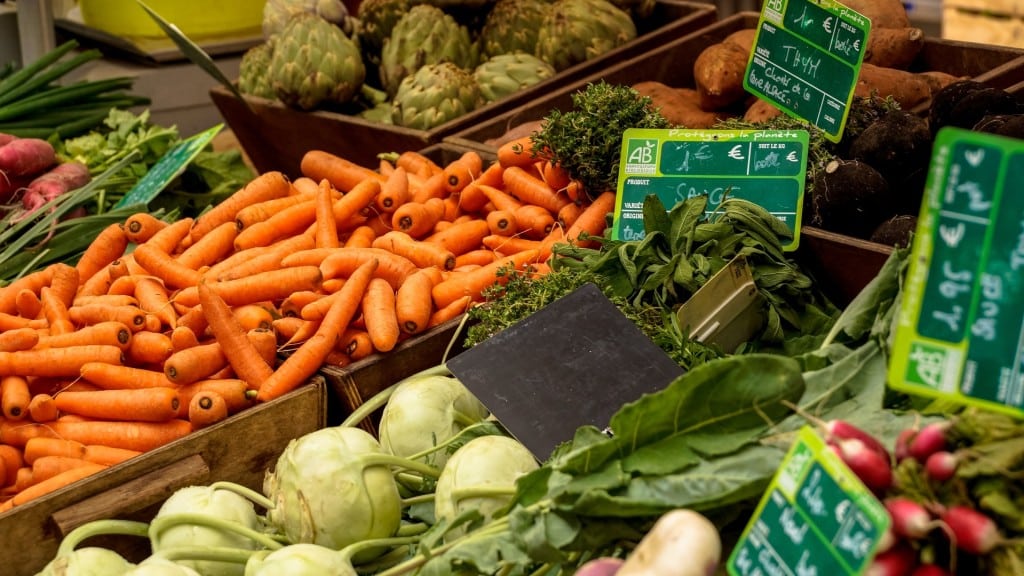
If you eat food, drink water, breathe air, love your community, and pay taxes, you should care about the 2023 Farm Bill.
The original farm bills were enacted in the 1930s as part of President Franklin Delano Roosevelt’s New Deal in response to the Dust Bowl and the Great Depression. The bills were designed to support farmers, ensure an adequate and affordable food supply, and protect our natural resources.
These goals have never been as vital as they are today. Decades of industrial farming using excess synthetic fertilizer and pesticides, frequent tillage of fields, and planting single crops (monocropping) have depleted the topsoil on farmland, threatening our ability to grow food. Topsoil, a precious natural resource, is eroding at an alarming rate, threatening another Dust Bowl. We are experiencing a water and soil crisis that the 2023 Farm Bill can help fix. Our national and international food security depends on it.
The Farm Bill is a massive package of bills written, negotiated, and passed every five years. Farm Bill funding was extended through September 2024, and we anticipate Congress will vote on new legislation this spring.
The bill is divided into “titles.” Currently, there are 12 titles. We will focus on two of them in this article:
- Title 2. Conservation (7% of the bill) funds programs to help farmers, foresters, and ranchers adopt practices to protect the land, air, water, and restore the soil.
- Title 4. Nutrition (76% of the bill) funds the Supplemental Nutrition Access Program (SNAP) (formerly called food stamps) and other smaller programs that provide food assistance for financially disadvantaged people.
Our food and national security depend on effective investments in both programs.
Approximately $20 billion from the Inflation Reduction Act (IRA) was directed to Title 2 Conservation to increase funding for these vastly popular programs. Conservation programs support farmers transitioning to regenerative agriculture to restore soil and protect the environment, making our farming, ranching, and forestry systems more resilient to severe weather while decreasing greenhouse gas (GHG) production. The programs are so popular that only 25-30% of farmers with acceptable applications during the 2018-2023 cycle received conservation funds because the programs are underfunded. The IRA dollars would remedy this underfunding problem.
The conservation programs finance practices farmers can use to restore healthy soil. Those practices include four basic principles:
1. Planting cover crops so there are always plants and root structure in the soil;
2. Composting to increase the organic matter in the soil;
3. Planting different types of crops together (multi-cropping) to increase species diversity; and
4. Plowing or tilling less so the soil structure and organisms are not disrupted.
These four practices improve soil health, allowing farmers to grow more nutritious food using fewer chemicals like pesticides and synthetic fertilizers. The soil absorbs and retains much more water. For every 1% increase in organic carbon, the soil increases its water-holding capacity by 20,000 gallons per land acre. This “sponge” effect of organic carbon within the soil is necessary to support plant life and makes the land more resilient to flooding and drought.
Farmers and ranchers are active environmentalists. The IRA investments in the conservation programs will financially support farmers in adopting climate-smart agriculture practices to reduce greenhouse gasses (GHGs). Currently, agriculture contributes about 9% of GHG emissions worldwide.
By improving animal feeding and manure management, decreasing the use of synthetic fertilizers, and adopting soil health strategies, agriculture can reduce GHG emissions and draw down carbon from the atmosphere into the soil.
Equally important in the Farm Bill is the need to expand access to affordable, nutritious food, reduce food insecurity, and work to improve low-income Americans’ health through expanded eligibility and improvements in SNAP, funded by Title 4 Nutrition.
Increasing support for produce-specific SNAP benefits in the Gus Schumacher Nutrition Incentive Program (GusNIP), as delineated in the bipartisan GusNIP Expansion Act introduced by U.S. Rep. Dan Kildee, would expand fruit and vegetable incentive programs like Michigan’s successful “Double Up Food Bucks” program across the country.
These programs make healthy, locally grown fruits and vegetables affordable and accessible for SNAP participants and help local farmers. Increasing investments to improve access to fresh produce combats rising food costs that prevent families with limited financial resources from making healthy choices at the grocery store.
We have the tools to fix this health equity issue. Ultra-processed packaged foods (often high in refined starches, simple sugars, and high fructose corn syrup) are cheaper and more widely available than locally grown produce.
Access to affordable, healthy food is paramount to improving health and preventing obesity, especially in families with children, and essential for the millions of adults living with chronic conditions (like diabetes, hypertension, or heart disease) for whom a diet plentiful in fruits and vegetables is literally medicine. Incentivizing the purchase of locally grown fruits/vegetables is a double investment – in human health and our farmers, who are stewards of the land and strive to grow healthy food in healthy soil.
What can we do to create a healthier farm bill for the planet and people and protects our food security?
Some members of Congress believe the $20 billion in IRA funds should be redirected away from the conservation programs, but our food security depends on these investments. Contact U.S. Sen. Debbie Stabenow, chair of the Senate Committee on Agriculture, Nutrition, and Forestry; U.S. Sen. Gary Peters; U.S. Rep. Elissa Slotkin, member of the House Committee on Agriculture; and your U.S. House representative to politely demand that IRA conservation funds remain in the 2023 Farm Bill.
Tell them that food security for all people is important to you. We must invest in conservation programs, our farmers, nutritious food, healthy soil, and valuable water resources. We can’t afford not to adopt climate-smart agriculture if the U.S. intends to continue to produce food for our country and the world. Agriculture can be a major climate crisis solution!

